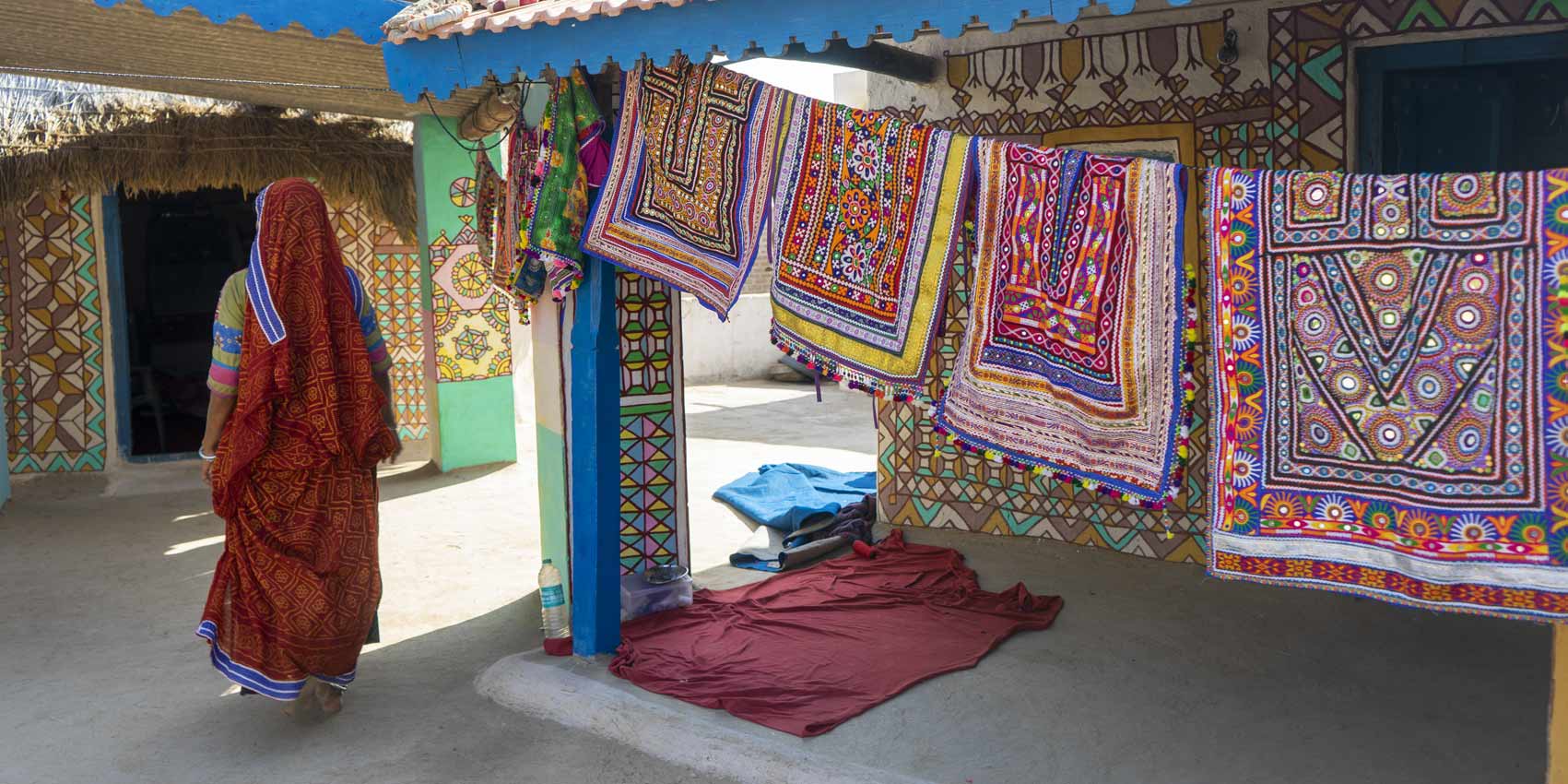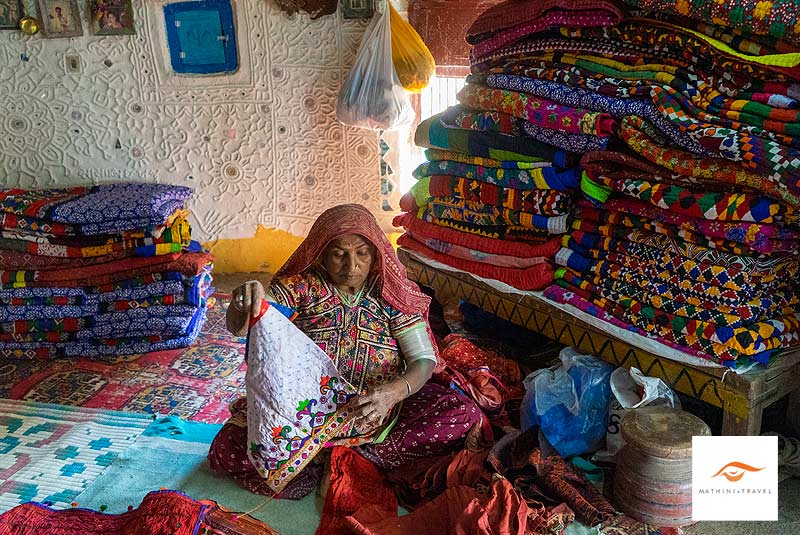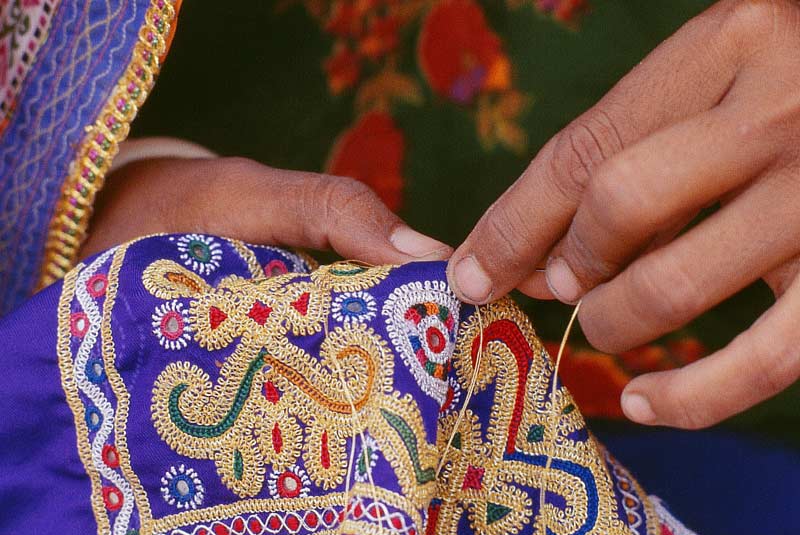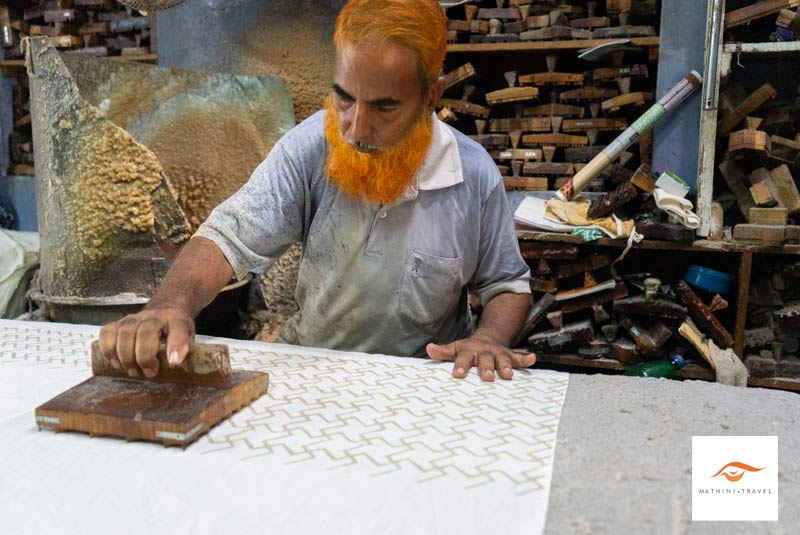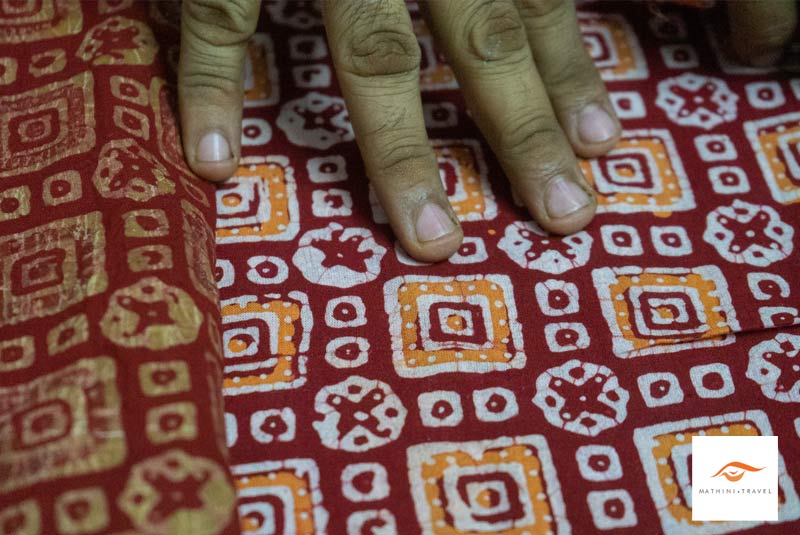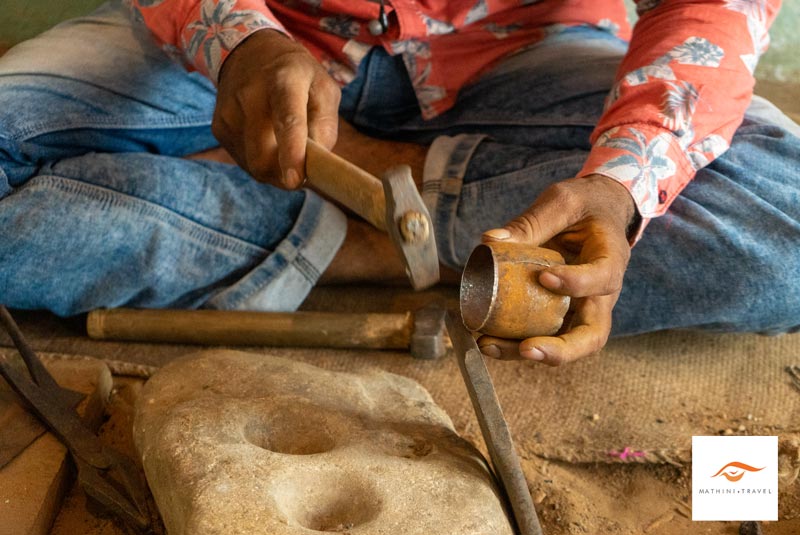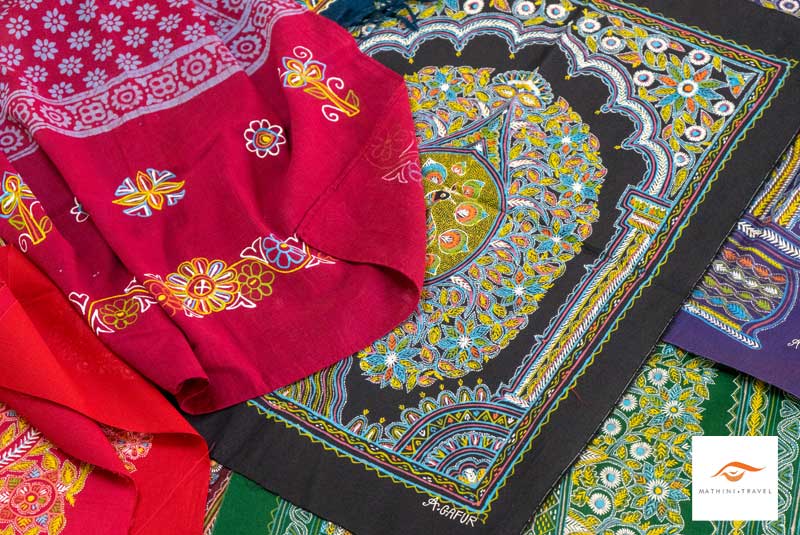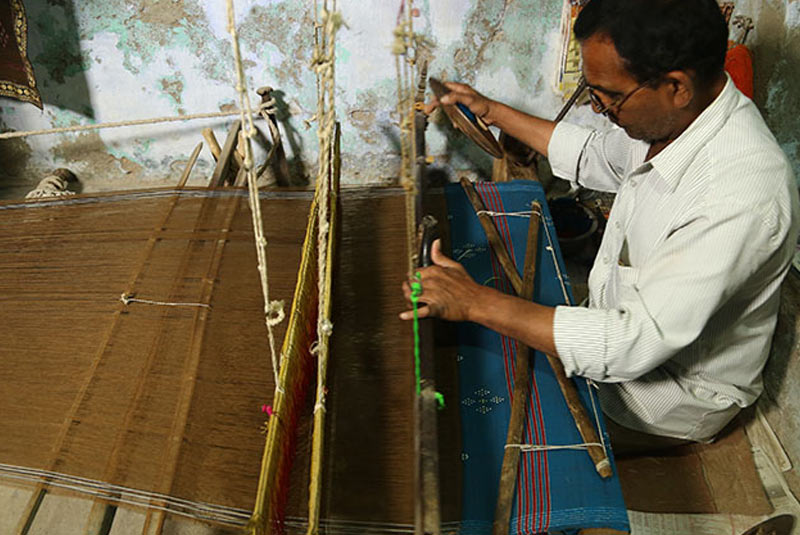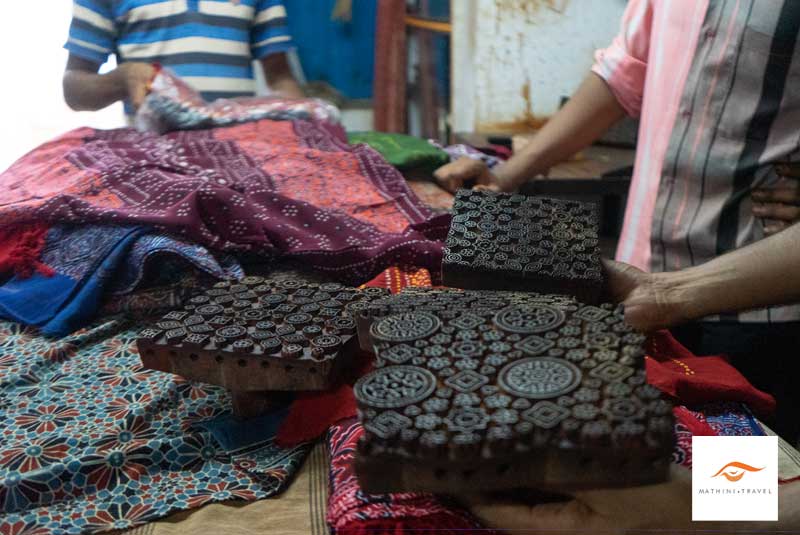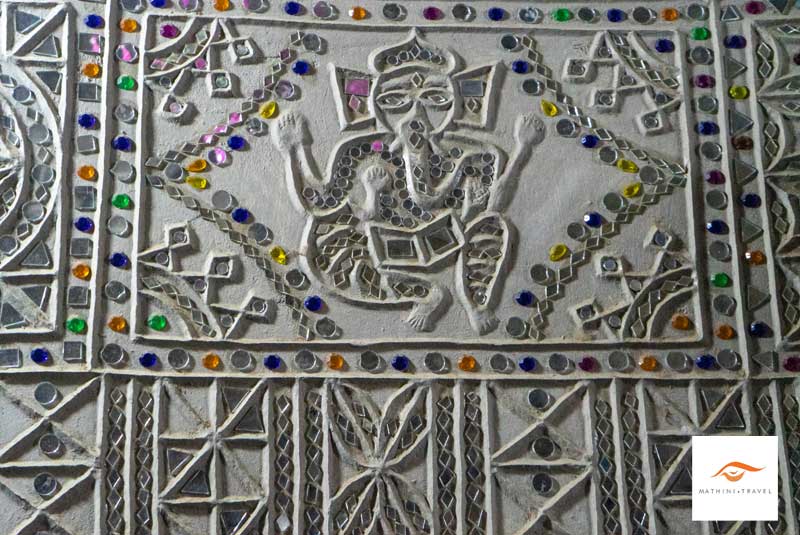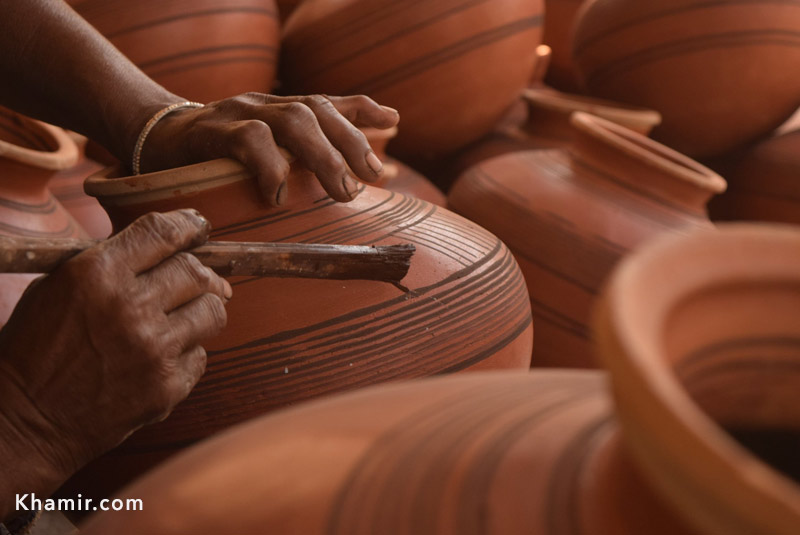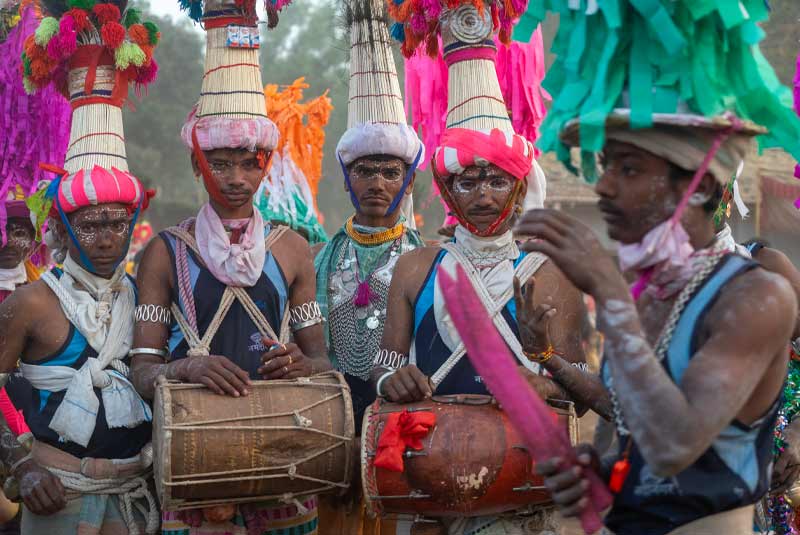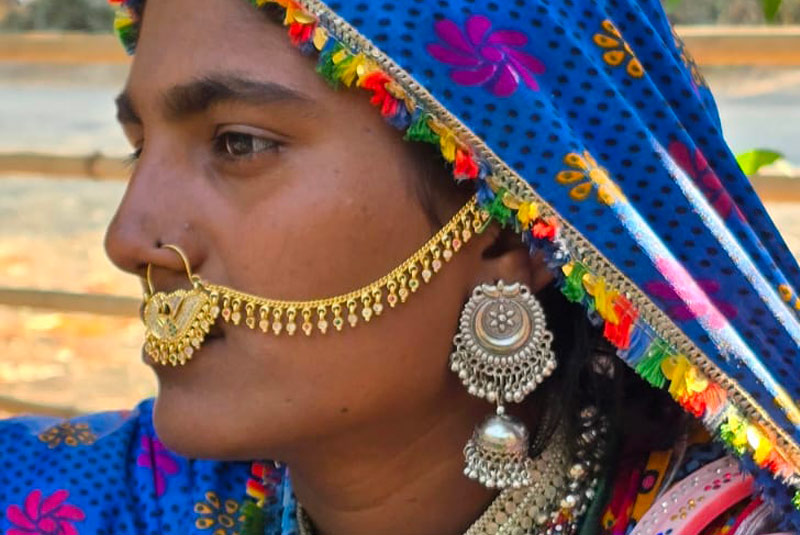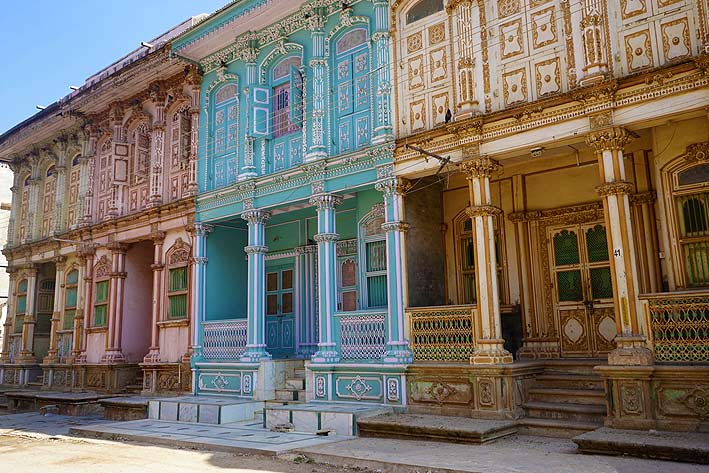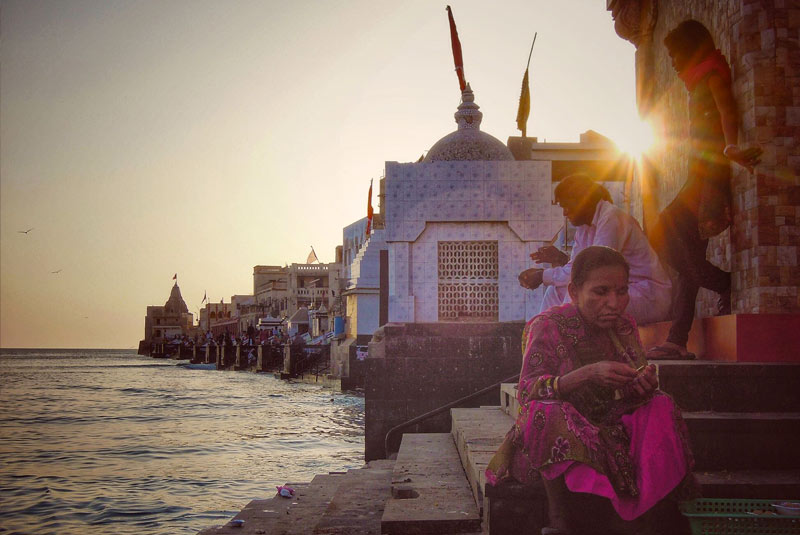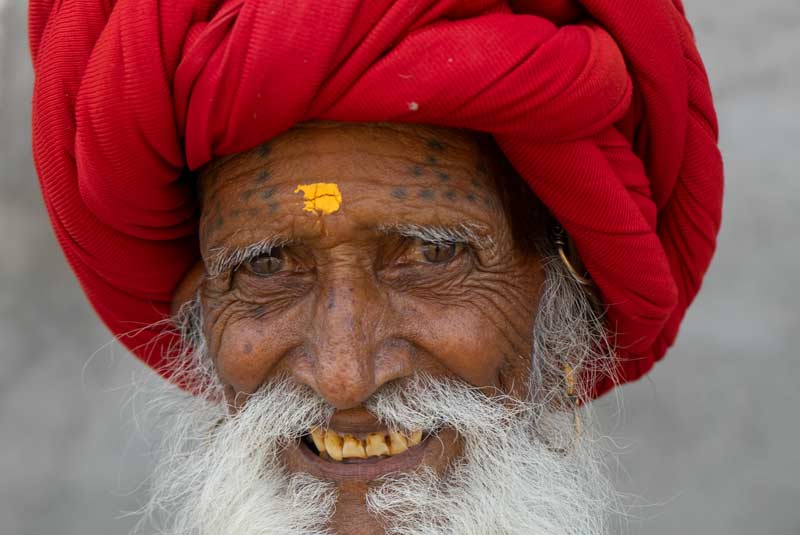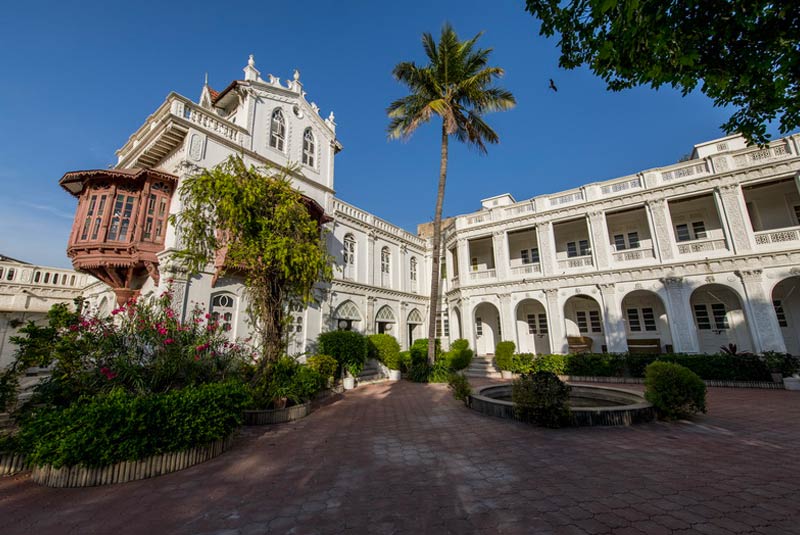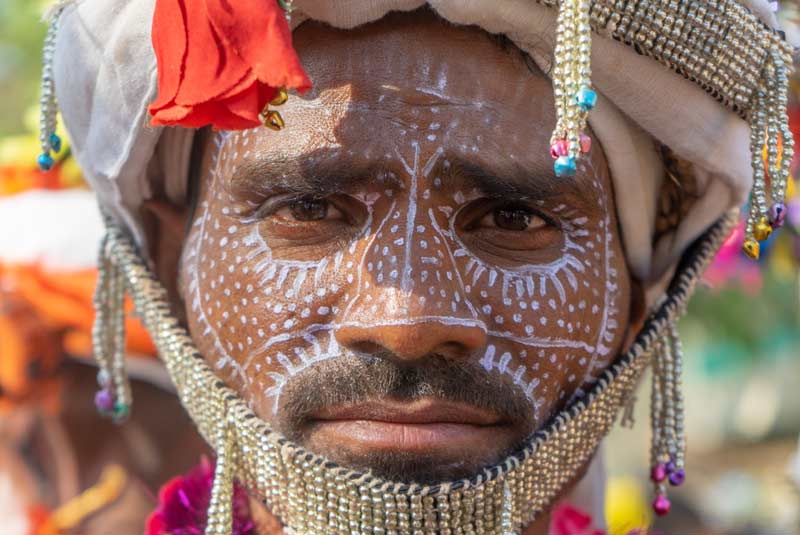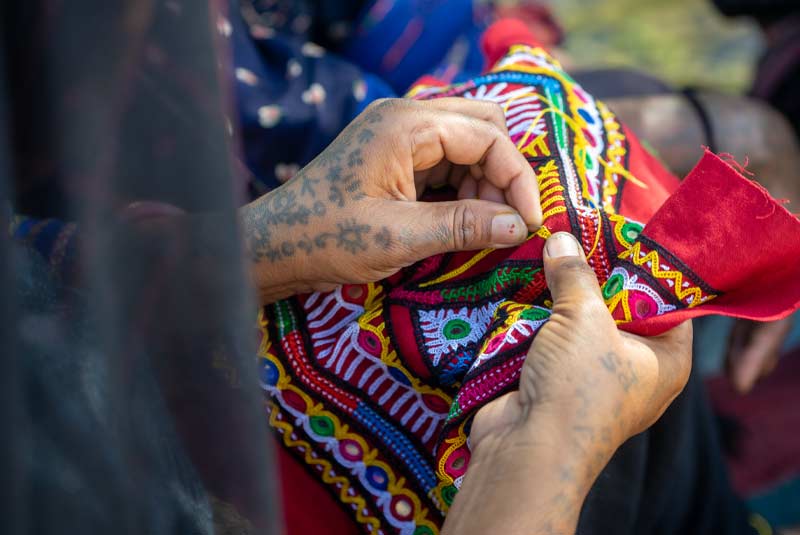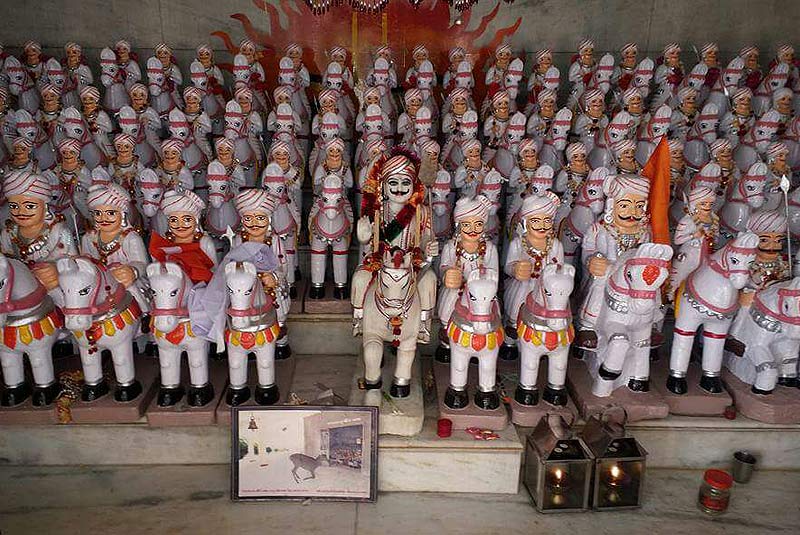Meeting with the artisans of Kutch
This ten-day journey takes you to meet the artisans of Kutch in Gujarat, in their workshops, where they will share with you their passion for their craft. An enriching itinerary that supports responsible tourism, participating in the knowledge and preservation of India’s artistic heritage.
Bordered by Pakistan and Rajasthan, Kutch is an ancestral land where extraordinary artistic wealth has been forged by integrating the traditions of a multitude of peoples who have settled there since Antiquity. No fewer than fifty distinct communities coexist there – Rabari, Jat, Ahir, Meghwal, Sodha, to name a few – each having developed its own unique crafts. While some crafts, such as Ajrakh or embroidery, are still very much alive, others are unfortunately on the verge of extinction, surviving only thanks to the perseverance of a handful of dedicated artisans.
Your “artistic menu” during this tour:
Kutch embroidery
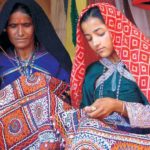 Embroidery is the art par excellence of Kutch. It can be said that there are as many styles of embroidery in Kutch as there are ethnic groups, about twenty. They reflect the belonging to a community and the status of individuals within that same group. We will meet the Rabari and Meghwal embroiderers in their villages whose richly decorated houses.
Embroidery is the art par excellence of Kutch. It can be said that there are as many styles of embroidery in Kutch as there are ethnic groups, about twenty. They reflect the belonging to a community and the status of individuals within that same group. We will meet the Rabari and Meghwal embroiderers in their villages whose richly decorated houses.
Blockprinting
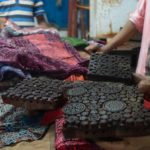 Ajrakh is a very common craft in Kutch. Generally concentrated in Ajrakhpur, this art is also found in small villages scattered here and there near Bhuj. It involves printing repetitive patterns on fabric using carved wooden blocks soaked in ink. The art is very ancient. It is believed to date back to the Indus Valley civilizations, nearly 3,000 BC.
Ajrakh is a very common craft in Kutch. Generally concentrated in Ajrakhpur, this art is also found in small villages scattered here and there near Bhuj. It involves printing repetitive patterns on fabric using carved wooden blocks soaked in ink. The art is very ancient. It is believed to date back to the Indus Valley civilizations, nearly 3,000 BC.
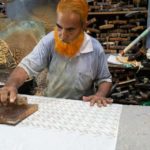 Batik, like Ajrakh, is a woodblock printing technique. The main difference here is the use of hot wax on the blocks instead of the usual ink. The principle of Batik is to protect areas of the fabric from staining by marking them with hot wax. The fabric is then dipped in several successive dye baths until the desired color is achieved. In the final stage, the wax is removed by dipping it in boiling water.
Batik, like Ajrakh, is a woodblock printing technique. The main difference here is the use of hot wax on the blocks instead of the usual ink. The principle of Batik is to protect areas of the fabric from staining by marking them with hot wax. The fabric is then dipped in several successive dye baths until the desired color is achieved. In the final stage, the wax is removed by dipping it in boiling water.
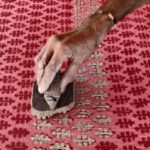 Bela takes its name from the village of the same name near Rapar Taluka in Kutch. It is a dying art, as only one artisan practices it anymore. This technique is performed with smaller wooden blocks than those of Ajrakh or Batik, and the design, which is usually done on a plain white background, is very graphic with two emblematic natural colors: red and black.
Bela takes its name from the village of the same name near Rapar Taluka in Kutch. It is a dying art, as only one artisan practices it anymore. This technique is performed with smaller wooden blocks than those of Ajrakh or Batik, and the design, which is usually done on a plain white background, is very graphic with two emblematic natural colors: red and black.
Bandhani
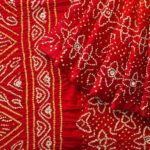 Bandhani is a type of textile printing known as “tie-dye”. The art of Bandhani is a meticulous process. The technique involves dyeing a fabric that is first tied at several points; these knots or “Bhindi” which can number in the hundreds on a single piece of fabric form a harmonious geometric design once removed after dyeing.
Bandhani is a type of textile printing known as “tie-dye”. The art of Bandhani is a meticulous process. The technique involves dyeing a fabric that is first tied at several points; these knots or “Bhindi” which can number in the hundreds on a single piece of fabric form a harmonious geometric design once removed after dyeing.
Rogan, oil painting on textile
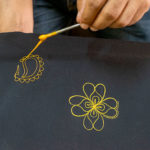 Rogan is a unique method of painting fabric. It originated in Persia and arrived in the village of Nirona (Kutch) about 400 years ago. Like Béla, there is now only one family of artisans who continue this tradition. In Rogan, elaborate designs are made “freehand”, applying thin lines of paint with a stylus. The paint is made from castor oil (the name “Rogan” means “oil paint”) which is boiled for about two days.
Rogan is a unique method of painting fabric. It originated in Persia and arrived in the village of Nirona (Kutch) about 400 years ago. Like Béla, there is now only one family of artisans who continue this tradition. In Rogan, elaborate designs are made “freehand”, applying thin lines of paint with a stylus. The paint is made from castor oil (the name “Rogan” means “oil paint”) which is boiled for about two days.
Traditional weaving of Kutch
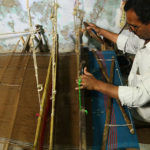 Weaving, like embroidery, is an integral part of the Kutch region. Kutch weavers traditionally come from the Marwada community. It is believed that 500 years ago, the Marwadas from Rajasthan migrated to the Kutch region and are now known as the Vankar. We will observe various weaving techniques in several small villages in the region.
Weaving, like embroidery, is an integral part of the Kutch region. Kutch weavers traditionally come from the Marwada community. It is believed that 500 years ago, the Marwadas from Rajasthan migrated to the Kutch region and are now known as the Vankar. We will observe various weaving techniques in several small villages in the region.
Ghantadi, the making of bells
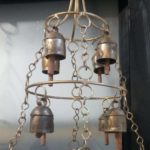 In small villages of Kutch the Lohars (a community of ironworkers) still perpetuate the tradition of Ghantadi, the making of metal bells. This art, which is believed to have originated in Sindh (a province of present-day Pakistan), was originally linked to livestock breeding. They allowed herders to identify and locate their herd from a distance. The raw material for making the bells is simple rusty iron plates purchased from junkyards. Everything is then shaped by hand, using simple tools.
In small villages of Kutch the Lohars (a community of ironworkers) still perpetuate the tradition of Ghantadi, the making of metal bells. This art, which is believed to have originated in Sindh (a province of present-day Pakistan), was originally linked to livestock breeding. They allowed herders to identify and locate their herd from a distance. The raw material for making the bells is simple rusty iron plates purchased from junkyards. Everything is then shaped by hand, using simple tools.
Namda, the art of felt
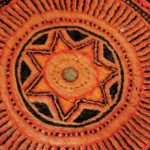 Namda is believed to have originated in the 11th century during the reign of Mughal Emperor Akbar, when a craftsman created a felted wool blanket for the king’s sick horse. Since then, this craft has been used to make saddlecloths for horses and camels in local communities, as well as for modern creations aimed at a wider audience, such as rugs, bags, hats, and more.
Namda is believed to have originated in the 11th century during the reign of Mughal Emperor Akbar, when a craftsman created a felted wool blanket for the king’s sick horse. Since then, this craft has been used to make saddlecloths for horses and camels in local communities, as well as for modern creations aimed at a wider audience, such as rugs, bags, hats, and more.
Pottery
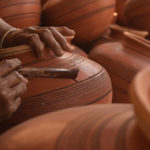 In the region of present-day Kutch, pottery began during the Indus Valley Civilization. In the small village of Khavda, for example, for generations, artisans have been making earthen pots using the same process observed in the Indus Valley excavations. While men handle the throwing, women handle all the surface decoration, which is mainly in the form of painting. Kutch pottery is usually red in color; this is due to “Geru,” a type of soil found in the Kutch region.
In the region of present-day Kutch, pottery began during the Indus Valley Civilization. In the small village of Khavda, for example, for generations, artisans have been making earthen pots using the same process observed in the Indus Valley excavations. While men handle the throwing, women handle all the surface decoration, which is mainly in the form of painting. Kutch pottery is usually red in color; this is due to “Geru,” a type of soil found in the Kutch region.
Lippan
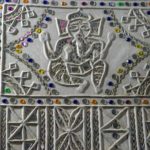 Lippan is a centuries-old wall painting craft from the Banni region of Kutch. It involves drawing raised designs on the walls of a house using camel or cow dung, clay, and mirrors. These relief murals are usually done by women from the Rabari and Meghwal communities. Lippan is not only a very attractive decoration but also contributes to the thermal insulation of traditional huts.This art has now evolved and is illustrated in paintings sold for the decoration of urban interiors.
Lippan is a centuries-old wall painting craft from the Banni region of Kutch. It involves drawing raised designs on the walls of a house using camel or cow dung, clay, and mirrors. These relief murals are usually done by women from the Rabari and Meghwal communities. Lippan is not only a very attractive decoration but also contributes to the thermal insulation of traditional huts.This art has now evolved and is illustrated in paintings sold for the decoration of urban interiors.
PLEASE NOTE: Some village names are not mentioned on the itinerary in order to maintain a certain exclusivity and surprises during this tour.
WHEN TO GO TO KUTCH? The best time to visit the Kutch region is from October to March when the temperatures are mild.
THIS TRIP INCLUDES:
- Double occupancy accommodation in boutique hotels and traditional huts.
- All breakfasts.
- All transportation by AC car with a driver who speaks basic English (taxes, fuel, accommodation, and driver’s meals included).
- 24/7 support; we are in constant contact with you.
NOT INCLUDED
- International flights
- Domestic flights
- Visa fees
- Travel insurance
- Meals other than those listed in “included.”
- All personal expenses
- Tips.
- Anything not listed in “included.”
You may also like...
Ahmedabad arrival
*
Depending on your arrival time, we'll visit the old city of Ahmedabad, known for its "pols," its walled neighborhoods where beautiful wooden houses remind us of the city's former splendor. Overnight stay in Old Ahmedabad in a boutique hotel.Ahmedabad - Dasada (Little Rann of Kuch)
*
We will then drive to Dasada and, on the way, stop at the Dada Harir Vav, a splendid five-story gallery well built in 1485 by the Muslim king Bai Harir.*
Arrival in Dasada in the late afternoon. Check-in at the hotel, free time. Overnight stay in Dasada in a resort with traditional huts.visit of Little Rann of Kutch
*
We will also observe the Agaria salt pans. In the afternoon, we will stroll through several villages to meet the Rabari, Bharwad, and Banjara communities. Overnight in Dasada.Dasada - Kulma
*
Arrival in the late afternoon in Kulma, where you'll stay at the Khamir guesthouse, an organization committed to developing Kutch's artisanal heritage. Your stay at this guesthouse will also allow you to see artisans like the Bela Blockprinting*
Overnight stay in KulmaKulma Area (embroidery, weaving, Ajrakh, and Namda) - Bhuj
*
Arrival in Bhuj at the end of the day. Overnight in Bhuj in an old Parsi home.Bhuj - Mundra - Mandvi
*
We will then head to Mundra and, along the way, stop at Kera, which houses an ancient 12th-century temple dedicated to Shiva. Although only a few vestiges remain of this sacred site, it's easy to imagine its former splendor.*
Mundra is known for its textile printing using the batik method. A tour of the workshop will be accompanied by explanations from the owner about the different stages of the printing process.*
In the late afternoon, we will drop off our bags in Mandvi, a small seaside town on the shores of the Arabian Sea. Overnight stay in a 4-star resort with a private beach.Mandvi - Devpur
*
We will also admire the palace of Maharaja Rao Vijayrajji, which has often been the setting for Bollywood film productions.*
We will then head north and stop in the village of Devpur, known as the stronghold of the Rabari Kasi. We will visit a Rabari village and a Kasi embroidery workshop.*
Overnight stay in DevpurDevpur - Nirona -Jura - Sumrasar - Hokda
*
Our first stop will be in Nirona, world-famous for its Rogan art, or "oil painting on textiles." In the same village, we will meet the Vadha community, which makes beautiful lacquer-painted utensils.*
A few kilometers away is the small village of Jura, known for its artisans from the Lohar community, who make copper bells without the need for soldering.*
We will continue our craft tour and visit the Kala Raksha NGO in the village of Sumrasar, which is committed to the preservation of hand embroidery.*
Overnight in traditional huts in Hodka.Hokda - Kavda - Meghwal villages - Rann of Kutch
*
We'll then meet Majikhan Ilamkhan, who will tell us about his art, Mutva.*
Along the way, we'll stop in several villages of the Meghwal community, whose traditional houses are beautifully decorated with colorful floral and geometric patterns. Meghwal women are renowned for their embroidery.*
We'll end our day at the Rann of Kutch, one of the largest salt flats in the world, to watch the sunset.*
Overnight in HodkaHodka - Muli
Muli - Tangaliya- Ahmedabad
*
Arrival in Ahmedabad at the end of the day. We'll drop you off at your hotel or at the airport. End of the trip. We look forward to seeing you again. Namaskar


